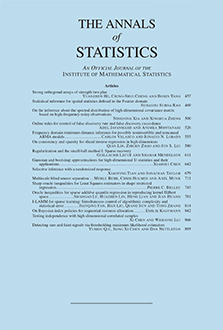Abstract
Parameters defined via general estimating equations (GEE) can be estimated by maximizing the empirical likelihood (EL). Newey and Smith [Econometrica 72 (2004) 219–255] have recently shown that this EL estimator exhibits desirable higher-order asymptotic properties, namely, that its O(n−1) bias is small and that bias-corrected EL is higher-order efficient. Although EL possesses these properties when the model is correctly specified, this paper shows that, in the presence of model misspecification, EL may cease to be root n convergent when the functions defining the moment conditions are unbounded (even when their expectations are bounded). In contrast, the related exponential tilting (ET) estimator avoids this problem. This paper shows that the ET and EL estimators can be naturally combined to yield an estimator called exponentially tilted empirical likelihood (ETEL) exhibiting the same O(n−1) bias and the same O(n−2) variance as EL, while maintaining root n convergence under model misspecification.
Citation
Susanne M. Schennach. "Point estimation with exponentially tilted empirical likelihood." Ann. Statist. 35 (2) 634 - 672, April 2007. https://doi.org/10.1214/009053606000001208
Information





